
Go for a deep, red wine that can stand up to the richness and savouriness of the ragu. Shiraz, Cabernet Sauvignon or Cabernet blends or Italian varieties such as Sangiovese or Nebbiolo will hold up.
The star of this dish is the beef. Three different cuts of beef each lend something special here: beef cheek for melt-in-your-mouth tenderness, short rib for richness and flavour, and osso buco for texture.

Servings
8 Servings

PREP TIME
60 mins

COOK TIME
8+ hours

TOTAL TIME
9+ hours

Difficulty
Easy

Wine pairing
Cabernet blend, Sangiovese
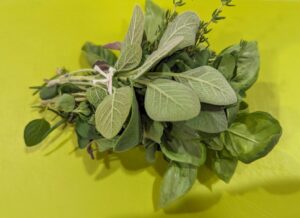
Serve over cooked pasta of your choice – pappardelle is my preference.
One of the reasons I make such a big batch of this ragu is to use (about half) in lasagne. Using ragu instead of bolognese gives it a much meatier, richer flavour.
1. This recipe is easy to follow if you have everything prepared before you start:
Tip: Prepare these ingredients the day before and store covered in the fridge overnight, so the next morning you just need to get the slow cooker on and then let it take care of the rest!
Note: If your slow cooker has a sear/saute setting, cook the vegetables directly in the slow cooker. Otherwise you’ll need to cook them on the stove top, and then transfer them to the slow cooker.
1. Turn your slow cooker on to the saute setting, add the oil and then the pancetta and cook until it’s just beginning to crisp (about 3 minutes).
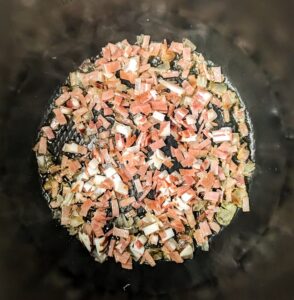
2. Add the onions, carrots, celery and garlic and cook, stirring occasionally, until they’re softened (about 5 minutes).
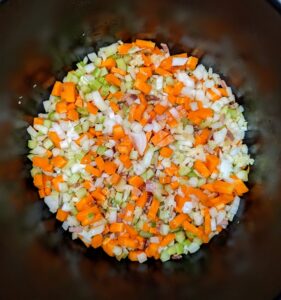
3. Add the white wine and cook until it’s mostly reduced (this will only take a minute or two).
Note: If you cooked the vegetables on the stove top, transfer them to the slow cooker now.
4. Add all of the tomatoes (tomato paste, diced tomatoes and passata) to the slow cooker. Rinse the cans and jars with about 1/2 cup of water, and add this to the slow cooker too along with the crumbled beef stock cube, herbs and pepper.
5. Submerge the beef in the sauce, and set the slow cooker on to low for 8 hours (or longer, if you have the time).
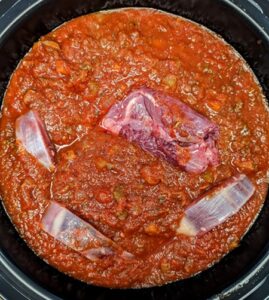
1. When the slow cooker is done, remove the beef pieces with tongs and a slotted spoon (the beef will most like be so tender that it falls apart if you’re just using tongs).
2. Place the beef onto a large chopping board and use two forks to shred it into smaller pieces. Discard the bones from the osso buco.
Tip: Take care to search through the sauce with the slotted spoon for any bones that may have come away during cooking.
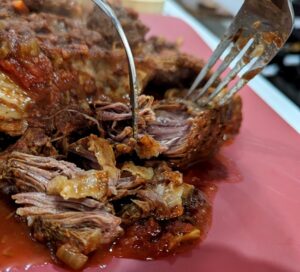
3. Re-add the shredded beef to the sauce, along with the spinach and cream. Taste, and adjust salt and pepper as needed.
Note: The sauce shouldn’t need reducing – the spinach will soak up some of the liquid, and the sauce will thicken on standing.
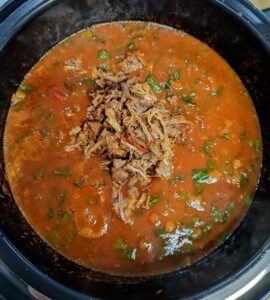
4. Serve the ragu over pasta. This makes a big batch, and it freezes perfectly for a few months. I always save about half to make lasagne.
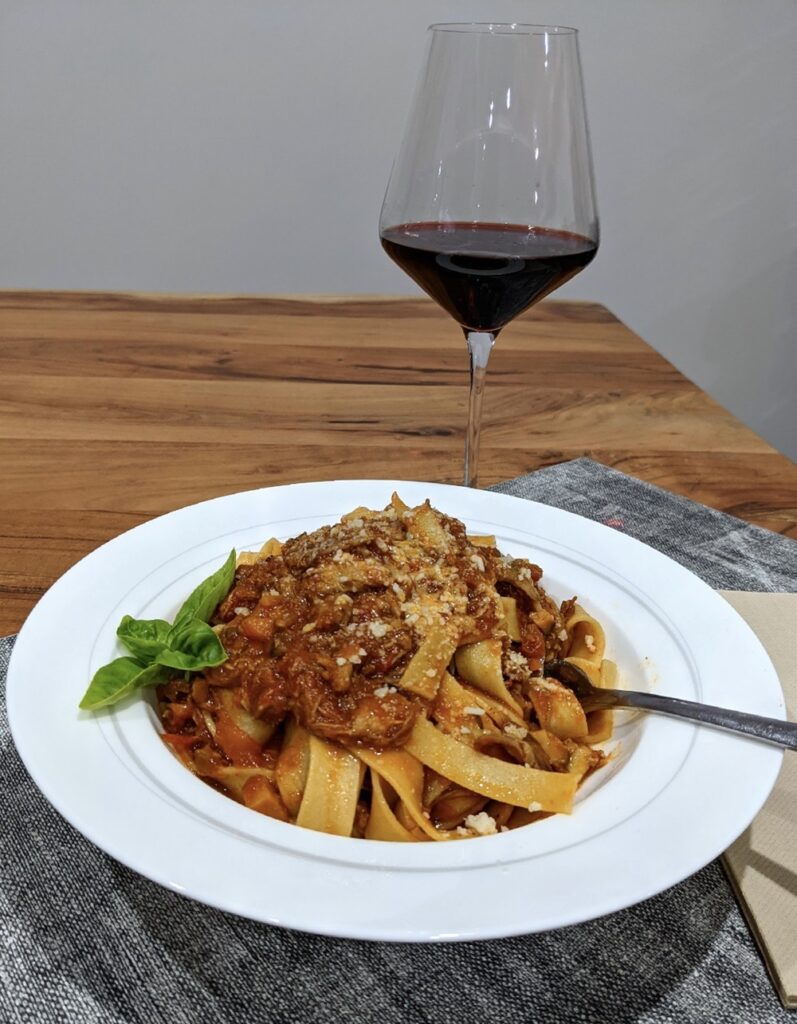

Go for a deep, red wine that can stand up to the richness and savouriness of the ragu. Shiraz, Cabernet Sauvignon or Cabernet blends or Italian varieties such as Sangiovese or Nebbiolo will hold up.
